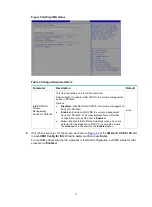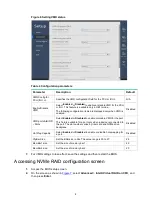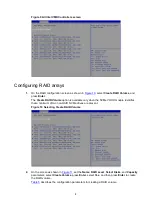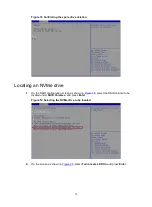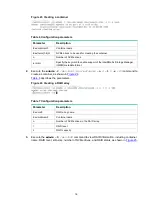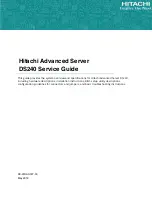
17
Figure 25 Viewing RAID information
Configuring hot spare drives
Use one of the following methods to configure hot spare drives:
•
Configuring hot spare drives while creating a RAID array
•
Configuring hot spare drives after RAID array creation
Configuring hot spare drives while creating a RAID array
1.
Verify that VMD is enabled. For more information, see "
2.
Execute the
mdadm –C /dev/md0 /dev/nvme[1-3]n1 –n 3 –e imsm
command to create
a container, as shown in
. The number of NVMe drives for creating the container is
n
+ 1. This section takes 3 as an example.
Figure 26 Creating a container
3.
Execute the
mdadm –C /dev/md1 /dev/md0 –n 2 –l 1 –z 10G
command to create a
RAID array, as shown in
. The number of NVMe drives for creating the RAID array is
n
. This section takes 2 as an example.
Figure 27 Creating a RAID array
Configuring hot spare drives after RAID array creation
After RAID array creation, execute the
mdadm –a /dev/md0 /dev/nvme1n1
command to add
hot spare drives to the container.
Summary of Contents for UniServer E3200 G3
Page 35: ...19 Figure 29 Selecting the RAID volume to be deleted...
Page 116: ...56 Figure 96 Controller Configuration screen...
Page 220: ...61 Figure 109 Selecting Main Menu 2 Select Controller Management and press Enter...
Page 243: ...84 Figure 153 Confirming the operation...
Page 293: ...50 Figure 89 Clearing completion...
Page 382: ...21 Figure 27 Storage controller information...
Page 389: ...7 Figure 8 Identifying a storage controller 2...



